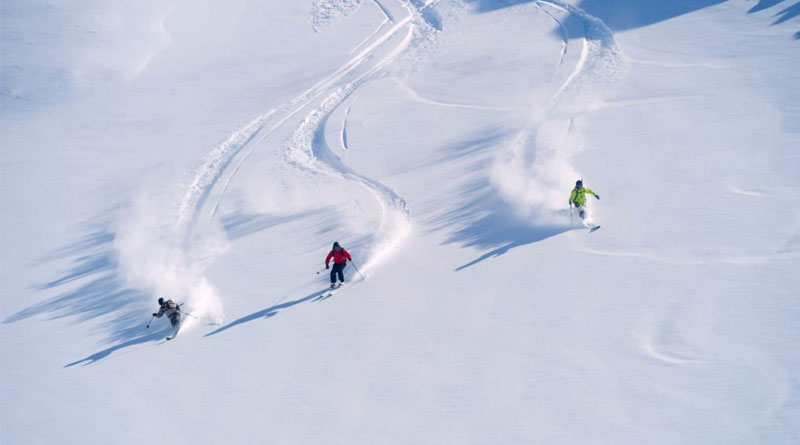How Wide Should The Powder Skis Be?
Depending on the manufacturer, the width of the powder skis can range from 98mm (waist) to 130mm and above. However, the width of the skis is heavily influenced by the terrain you will be skiing on. In some regions, you will see only a few powder days per year. This is where you don’t need the widest skis out there. On the other hand, in regions like the Rockies and Tetons; you will appreciate that extra width because it will provide excellent floatability on these terrains. Below is a breakdown of some of North America’s most common ski destinations. You can use it as a reference when choosing a pair of powder skis.
East Coast
If you are someone living on the East Coast and see only a few powder days, you should get a pair near the lower spectrum in the range of 98mm to 105mm. If you want a pair of powder-only skis, you can stretch the range up to 110mm. You can get the widest skis for East Coast skiing but that extra wide will make it a bone-rattling, teeth-chattering nightmare on ice. In these conditions, relatively narrower skis will provide more control in and outside the trees.
Colorado, Utah & Wyoming
If you are planning to ski in the Rockies or Tetons, the extra width will add a crucial float in the powder. For an average skier, a width of 115-125mm will work fine in most situations. Also, look for skis with tip and tail rocker for deep powder days. Up until the snow gets choppy, the easier it will be if you have more rocker. If you are an expert skier, go with the skis with metal laminate layers and tip rocker.
The Pacific Northwest
The overall design becomes just as important as width as you move westward into the coastal weather patterns of Tahoe and all the way up to British Columbia. This is where the rocker and reverse sidecut originated. Anything from 110mm to 120mm underfoot can be a good choice for these kinds of terrain.
Alaska
For deep powder snow typically found in Alaska, I would recommend a width between 100mm and 120mm underfoot for optimal flotation and maneuverability. If you are expecting a mix of conditions (like firm or icy snow), a slightly narrower ski in the range of 90mm to 100mm underfoot will provide better edge control and stability on harder surfaces.
Atomic Bent Chetler: Best Powder Skis

Ability level: Advanced to Expert
Dimensions: 143-120-134mm
Lengths: 176, 184, 192cm
Category: Powder
Although the inside hasn’t changed from last year, the flagship powder-slashing skis are now backed with new graphics. They provide plenty of float and powder slash ability as you would expect. They are also very snappy and responsive while remaining surprisingly light and easy to jib around them. When it comes to taking things a little larger, the skis provide an excellent landing platform. Atomic says that the 30% rocker (40% camber) profile is designed for deep and variable snow.
With their light wood core and carbon backbone, they are light enough for excellent maneuverability. They flow even when the snow starts to get skied out and they’re damp enough to keep you stable when you cross someone else’s tracks. You can even carve out some pretty good turns to the chop with relative ease.
Atomic claims that the HRZN Tech Tip and Tail provide 10% more surface area for flow and playful performance. While it feels hard to quantify the improvement in flow, they are definitely playful and forgiving when buttering and slashing your way across the mountain. That 120mm continues to deliver exactly what Atomic has been promising for years. A hard-charging and delightfully fun-loving powder ski that promises to impress everyone from casual powder skiers to cliff-dropping semi-pros.
What I like: Exceptionally powerful for the weight.
What I don’t: You can’t use them on groomers or as a daily driver.
Ski Width Measurement
When it comes to ski measurement, there are three common points: at the tip, waist, and tail. The tip is the widest point of the skis and it is also called a shovel. The tail is the other end of the ski and finally, the waist, which is the part under your foot. The waist is the most important measurement when it comes to ski widths. This is what most people use to analyze ski width. Ski dimensions are commonly measured in millimeters and it is written as 128-98-118mm (tip-waist-tail).




